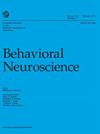Less is more: Smaller hippocampal subfield volumes predict greater improvements in posttraumatic stress disorder symptoms over 2 years.
IF 1.5
4区 医学
Q3 BEHAVIORAL SCIENCES
引用次数: 0
Abstract
Posttraumatic stress disorder (PTSD) is a heterogeneous disorder, and symptom severity varies over time. Neurobiological factors that predict PTSD symptoms and their chronicity remain unclear. This study investigated whether the volume of the hippocampus and its subfields, particularly cornu ammonis (CA) 1, CA3, and dentate gyrus, are associated with current PTSD symptoms and whether they predict PTSD symptom changes over 2 years. We examined clinical and structural magnetic resonance imaging measures from 252 trauma-exposed post-9/11 veterans (159 with Time 1 PTSD diagnosis) during assessments approximately 2 years apart. Automated hippocampal subfield segmentation was performed with FreeSurfer Version 7.1, producing 19 bilateral subfields. PTSD symptoms were measured at each assessment using the Clinician-Administered PTSD Scale-IV (CAPS). All models included total intracranial volume as a covariate. First, similar to previous reports, we showed that smaller overall hippocampal volume was associated with greater PTSD symptom severity at Time 1. Notably, when examining regions of interest (CA1, CA3, dentate gyrus), we found that smaller Time 1 hippocampal volumes in the bilateral CA1-body and CA2/3-body predicted decreased PTSD symptom severity at Time 2. These findings were not accounted for by combat exposure or treatment history. Additionally, both Time 1 CA1-body and CA2/3-body volume showed unique associations with changes in avoidance/numbing, but not with changes in reexperiencing or hyperarousal symptoms. This supports a more complex and nuanced relationship between hippocampal structure and PTSD symptoms, where during the posttrauma years bigger may not always mean better, and suggests that the CA1-body and CA2/3-body are important factors in the maintenance of PTSD symptoms. (PsycInfo Database Record (c) 2024 APA, all rights reserved).少即是多:海马亚区体积越小,预示着创伤后应激障碍症状在两年内的改善程度越大。
创伤后应激障碍(PTSD)是一种异质性疾病,症状的严重程度随时间而变化。预测创伤后应激障碍症状及其慢性化的神经生物学因素仍不清楚。本研究调查了海马及其亚区(尤其是粟粒1(CA)、CA3和齿状回)的体积是否与当前的创伤后应激障碍症状相关,以及它们是否能预测两年内创伤后应激障碍症状的变化。我们对 252 名 9/11 事件后受到创伤的退伍军人(其中 159 人被诊断为第一时间创伤后应激障碍)进行了临床和结构性磁共振成像测量,评估时间相隔约 2 年。使用 FreeSurfer 7.1 版对海马亚区进行了自动分割,产生了 19 个双侧亚区。每次评估都使用临床医师管理创伤后应激障碍量表-IV(CAPS)测量创伤后应激障碍症状。所有模型都将颅内总容积作为协变量。首先,与之前的报告类似,我们发现海马体总体积较小与时间 1 时创伤后应激障碍症状严重程度较高有关。值得注意的是,在研究相关区域(CA1、CA3、齿状回)时,我们发现时间1时双侧CA1-体和CA2/3-体的海马体积较小,这预示着时间2时创伤后应激障碍症状的严重程度会降低。这些研究结果并不能被战斗经历或治疗史所解释。此外,时间 1 CA1 体和 CA2/3 体的体积与回避/麻木症状的变化有独特的关联,但与再体验或过度焦虑症状的变化无关。这支持了海马结构与创伤后应激障碍症状之间更复杂、更微妙的关系,在创伤后的几年中,体积越大并不一定意味着越好,这表明CA1体和CA2/3体是维持创伤后应激障碍症状的重要因素。(PsycInfo Database Record (c) 2024 APA, 版权所有)。
本文章由计算机程序翻译,如有差异,请以英文原文为准。
求助全文
约1分钟内获得全文
求助全文
来源期刊

Behavioral neuroscience
医学-行为科学
CiteScore
3.40
自引率
0.00%
发文量
51
审稿时长
6-12 weeks
期刊介绍:
Behavioral Neuroscience publishes original research articles as well as reviews in the broad field of the neural bases of behavior.
 求助内容:
求助内容: 应助结果提醒方式:
应助结果提醒方式:


